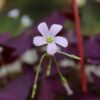Traditional Dishes for Chinese Thanksgiving (中秋节)

Chinese Thanksgiving, or the Mid-Autumn Festival (中秋节, Zhōngqiū Jié), is one of the most significant traditional holidays in Chinese culture. Celebrated on the 15th day of the 8th month of the lunar calendar, the festival is a time for family reunions, giving thanks for the harvest, and celebrating the full moon. It is also a time to express gratitude for the abundance of food and the joy of togetherness. While the Mid-Autumn Festival has deep cultural and historical significance, it is also an occasion for indulging in delicious traditional foods. In this article, we will explore some of the most iconic dishes associated with the Mid-Autumn Festival, examining their history, symbolism, and how they are prepared and enjoyed during this festive occasion.
Mooncakes (月饼)
One of the most symbolic foods of the Mid-Autumn Festival is the mooncake (月饼, Yuèbǐng). These round pastries are filled with a variety of fillings, such as lotus seed paste, red bean paste, salted egg yolks, and even modern variations like chocolate or durian. Mooncakes are traditionally exchanged among family members, friends, and colleagues as gifts to celebrate the full moon, which symbolizes completeness and unity.
History and Symbolism of Mooncakes
Mooncakes have been a part of the Mid-Autumn Festival for over a thousand years, with their origin tracing back to the Tang Dynasty. The round shape of the mooncake symbolizes the full moon, and the sweet, rich fillings inside represent the blessings of family reunion and harmony. In ancient China, mooncakes were often used as a vehicle for secret messages during political uprisings, but today, they are primarily a symbol of unity and family bonding.
While traditional mooncakes are made with lotus seed paste or red bean paste and salted egg yolks, there are many modern variations. Some of the more innovative fillings include chocolate, matcha, and even ice cream. The packaging of mooncakes is also an important aspect of the gift-giving tradition, with elaborate boxes often used to present these treats to loved ones.
Pomelo (柚子)
Another traditional food associated with the Mid-Autumn Festival is pomelo (柚子, Yòuzi). This large citrus fruit is often eaten during the festival for its sweet and tangy flavor, and its round shape symbolizes family unity and completeness, much like the mooncake. In addition to being a delicious snack, pomelos also have symbolic meanings in Chinese culture.
Symbolism of Pomelo
The pomelo is considered a symbol of good luck and prosperity. In some parts of China, it is common to place a pomelo on the family altar or in the center of the dining table as a gesture of respect for ancestors and as a way of inviting blessings into the home. The fruit’s large size also makes it an ideal centerpiece for a family feast, symbolizing abundance and the idea that there is always enough to share.
Pomelos are typically peeled and eaten in segments, and the flesh is juicy and fragrant. Some families also use pomelo peel to make tea or jam, adding to the versatility of this fruit during the Mid-Autumn Festival.
Crab (螃蟹)
In many coastal regions of China, crab (螃蟹, Pángxiè) is an essential part of the Mid-Autumn Festival feast. Known for its delicate flavor and rich, sweet meat, crab is often served as a luxury dish during special occasions like this one. The most famous variety of crab associated with the Mid-Autumn Festival is the hairy crab (大闸蟹, Dàzháxiè), which is found in the Yangtze River delta.
Crab and Its Symbolism
Crabs are often enjoyed with a variety of dipping sauces, and their rich, tender meat pairs perfectly with seasonal dishes. Eating crab during the Mid-Autumn Festival is believed to bring good fortune and prosperity, and it is a luxurious way to mark the occasion. The crab’s hard shell is symbolic of resilience and strength, while its soft, delicate meat represents the nurturing aspect of the family.
The act of sharing crab with family and friends during the Mid-Autumn Festival is a way of celebrating togetherness and abundance. Crab dishes are often served as part of a larger meal, which may include other delicacies such as rice, soup, and stir-fried vegetables.
Lotus Root (莲藕)
Lotus root (莲藕, Lián’ǒu) is another popular ingredient used in Mid-Autumn Festival dishes, especially in soups and stir-fries. Known for its crunchy texture and mild, slightly sweet flavor, lotus root is often used in both savory and sweet dishes during the festival.
Symbolism of Lotus Root
In Chinese culture, the lotus flower is a symbol of purity, beauty, and spiritual enlightenment. Lotus roots, being the edible part of the lotus flower, carry similar symbolic meanings of good fortune and inner peace. The lotus root’s many holes also represent a connection between the past, present, and future, making it a fitting food for a festival that celebrates the passing of time and the reunion of family members.
Lotus root is often prepared by braising or stir-frying and can be paired with meats such as pork or duck. It is also sometimes served in sweet desserts, such as soups with rock sugar, where the root is cooked to a tender, melt-in-your-mouth texture.
Duck (鸭子)
In many parts of China, especially in the southern regions, duck (鸭子, Yāzi) is a traditional dish enjoyed during the Mid-Autumn Festival. The most famous duck dish associated with the festival is braised duck (红烧鸭, Hóngshāo Yā), which is cooked slowly with soy sauce, sugar, and spices until it becomes tender and flavorful.
Symbolism of Duck
Duck is often chosen for its rich flavor and texture, which contrasts well with the more delicate flavors of mooncakes and pomelos. The act of eating duck is symbolic of prosperity and wealth, as it represents abundance. Ducks are also known for their monogamous nature, making them a symbol of fidelity and strong family ties.
Braised duck is usually served as part of a larger meal, alongside other dishes like lotus root, vegetables, and rice. The dish is often cooked in large quantities, as it is meant to be shared among family and friends during the Mid-Autumn Festival.
Sticky Rice Cakes (糯米糕)
Sticky rice cakes (糯米糕, Nuòmǐ Gāo) are another traditional food enjoyed during the Mid-Autumn Festival. Made from glutinous rice flour, these soft, chewy cakes are often filled with sweet fillings like red bean paste or lotus seed paste. Sticky rice cakes can be served in various shapes, such as round, square, or even in the form of little animals or flowers.
Symbolism of Sticky Rice Cakes
Sticky rice cakes represent unity and completeness, as their soft, glutinous texture symbolizes the close bond between family members. The round shape of some sticky rice cakes mirrors the shape of the moon, reinforcing the connection between food, family, and the lunar cycle. These rice cakes are often enjoyed as a dessert after the main meal, offering a sweet conclusion to the Mid-Autumn Festival feast.
Sticky rice cakes can be enjoyed fresh, or they can be steamed, baked, or fried. In some regions, they are wrapped in leaves and steamed to create a more rustic and fragrant version of the treat.
Vegetarian Dishes (素菜)
For those who observe vegetarian diets or prefer plant-based foods, the Mid-Autumn Festival offers a variety of vegetarian dishes that are just as flavorful and symbolic as their meat-based counterparts. Vegetarian dishes (素菜, Sùcài) are commonly prepared using seasonal vegetables like Chinese cabbage, bok choy, and mushrooms, often stir-fried or steamed with aromatic spices.
Symbolism of Vegetarian Dishes
Vegetarian dishes symbolize purity, health, and balance. Eating vegetables during the Mid-Autumn Festival is seen as a way to honor nature and the earth, expressing gratitude for the harvest. Many families also serve vegetarian dumplings and spring rolls, which are considered auspicious and bring blessings for the coming year.
These vegetarian dishes provide a balance to the richer, meat-heavy dishes and are often enjoyed by those who seek to maintain a lighter, more health-conscious approach to their Mid-Autumn Festival meal.
Conclusion
The Mid-Autumn Festival is a time of family reunions, celebration, and reflection. The dishes served during this holiday are rich in history, symbolism, and cultural significance. From mooncakes and pomelos to duck, sticky rice cakes, and vegetarian options, the foods enjoyed during the Mid-Autumn Festival reflect the diversity and depth of Chinese culinary traditions.
These dishes are not just about nourishment; they are about connecting with family and friends, expressing gratitude for the harvest, and celebrating the bonds that tie people together. As families gather to share these foods, they also share stories, laughter, and a deep sense of unity, making the Mid-Autumn Festival a truly special occasion.

